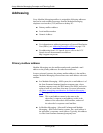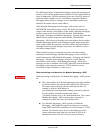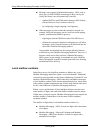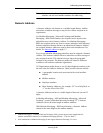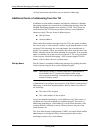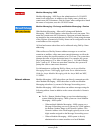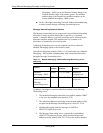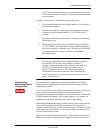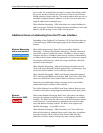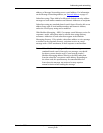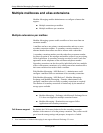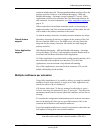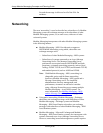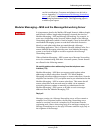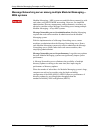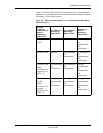
Avaya Modular Messaging Concepts and Planning Guide
6-10 November 2004
Avaya Modular Messaging Concepts and
Planning Guide
access code. For example both sites may be using 4-digit dialing within
the system, but they could use the switch access code as a prefix when
dialing employees at the other site. The network address does not have to
match the (assigned) Numeric Address, so in this case the remote users
might be addressable in multiple ways.
When Modular Messaging—MSS subscribers use a network address to
address messages, Modular Messaging translates the address to an e-mail
address, and the message is sent using e-mail protocols.
Additional forms of addressing from the PC user interface
Depending on the Graphical User Interface (GUI) client subscribers use
to send messages, Modular Messaging supports the following address
formats:
Modular Messaging
with e-mail servers
When addressing messages from a PC user interface, Modular
Messaging—Exchange and Modular Messaging—Domino subscribers
can use the respective global directories. An address is always unique
within the directory. An address entered at any location is automatically
available at all locations within the organization. E-mail servers support
an enterprise-wide directory, which uses unique identifiers valid from
anywhere in the enterprise.
When Modular Messaging—Microsoft Exchange subscribers use the
Client Add-in for Microsoft Outlook application to send messages, they
can use the Global Address List for directory assistance.
When Modular Messaging—IBM Lotus Domino subscribers integrate
DUC software from IBM to run with their IBM Lotus Notes client, they
can use the IBM Lotus Notes Address Book for directory assistance.
Subscribers can additionally address messages by the local mailbox
number and Numeric Address of the recipient.
The Global Address List and IBM Lotus Notes Address Book are also
available to subscribers using supported standards-based e-mail clients.
Modular
Messaging—MSS
When using Modular Messaging Web Client, subscribers can address
messages to recipients using their names, e-mail addresses, or mailbox
numbers. The Web Client provides access to the MSS directory and the
e-mail directory. From the directory, subscribers can search for other
users and address messages to them. The Web Client supports only
Modular Messaging—Avaya MSS version.
When Modular Messaging—MSS subscribers use Client Add-in for
Microsoft Outlook or a standards-based e-mail client, they can address
messages using the LDAP Address Book that the MSS provides.
Subscribers can also address messages by name, primary mailbox



